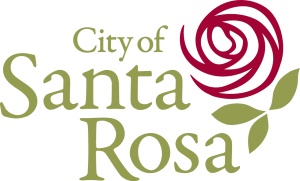City of Santa Rosa Releases Draft Comprehensive Cannabis Policy
 Santa Rosa released their draft comprehensive cannabis ordinance on June 30, 2017. The draft is more permissive than most in the North Coast area, and indicates Santa Rosa’s desire to become a hub for Northern California cannabis activity. (See here for a draft land use policy chart.)
Santa Rosa released their draft comprehensive cannabis ordinance on June 30, 2017. The draft is more permissive than most in the North Coast area, and indicates Santa Rosa’s desire to become a hub for Northern California cannabis activity. (See here for a draft land use policy chart.)
The draft ordinance would allow for all license types under MAUCRSA except for “microbusiness.” There is no separate Processor, Packaging & Labeling, or Infused Product Manufacturing permits, which will likely be types of state licenses based on the draft regulations that were proposed earlier this year. Adult use cannabis businesses would still be prohibited within the city of Santa Rosa. There would be standards imposed on all types of medical cannabis businesses related to security, inventory and tracking, building and fire permits, odor control, lighting, and noise.
The ordinance would allow both volatile (“Level 1”) and non-volatile (“Level 2”) manufacturing. Level 1 manufacturing would be permitted with a Zoning Clearance in the BP, IL, and IG industrial zones, and Level 2 manufacturing would be permitted with a Conditional Use Permit in the IL and IG industrial zones. Manufacturers of edible cannabis products must obtain state certification as a food handler and a Sonoma County Health Permit.
Testing laboratories would be permitted in the CO commercial zone with a Minor Conditional Use Permit, and in the BP, IL and IG industrial zones with a Zoning Clearance. Commercial cannabis cultivation would only be permitted in indoor or mixed-light environments, in a fully-enclosed space. Depending on the size of the facility, either a Conditional Use Permit (for sites 5,001 square feet and larger) or a Minor Conditional Use Permit (for sites up to 5,000 square feet) would be required.
Medical cannabis retail facilities will be allowed in most commercial and industrial zones, and will require a Conditional Use Permit. Only medical cannabis retail facilities with a storefront that is open to the public would be able to conduct deliveries. Sales cannot be conducted exclusively by delivery under the draft ordinance. (This is in contrast with MAUCRSA, which states that medical cannabis retail licensees may conduct sales exclusively by delivery and do not have to have their storefront open to the public.) Drive-through or walk-up sales would also be prohibited. Medical cannabis retail facilities must be at least 600 feet from schools, at least 1000 feet from another medical cannabis retail facility, and can stay open between 9AM and 9PM seven days a week unless the review authority imposes more restrictive hours.
On-site consumption would be allowed under certain circumstances if permitted by both local and state law. The Conditional Use Permit application for the cannabis business must state whether the use will include on-site consumption by patients, in addition to including other information. Employees of a medical cannabis retail facility who are qualified patients would also be able to consume on-site within designated spaces, provided it is in accordance with the local smoking ordinance and state law.
Under the draft ordinance, commercial medical cannabis cultivation cannot take place outdoors, but rather must occur in a fully enclosed space. Depending on the size of the facility, either a Conditional Use Permit or a Minor Conditional Use Permit would be required. Commercial medical cannabis cultivators will have to abide by all applicable regulations governing the use of pesticides.
Personal cultivation of both medical and adult-use cannabis would be permitted in all residential districts, but a Zoning Clearance would be required. For medical cannabis, a maximum of 100 square feet of cultivation space per patient would be allowed per residence, regardless of the number of patients living at the residence. For caregivers, a maximum of 500 square feet of cultivation space would be allowed (which shall correspond to no more than five qualified patients, who each get 100 square feet). Based on the California Supreme Court’s holding in People v. Kelly (2010) 47 Cal. 4th 1008, these limits are subject to challenge, since patients are legally permitted to cultivate and possess as much as their medical needs require. For adult use cannabis, no more than 6 plants may be grown per residence regardless of the number of adults living there. A number of other requirements also apply to personal cultivation including adherence to the Best Management Practices for Cannabis Cultivation issued by the County Agricultural Commissioner.
The draft ordinance would require permittees to pursue state licenses and comply with state licensing requirements. There would then be a distinction created between “operators in good standing,” who receive land use permit approval within 10 months of the date the state begins issuing licenses; and “new operators,” who receive land use permits after the 10-month transition period.
The ordinance would allow multiple permits per site if this was allowed by both local and state law. Operators issued licenses for the same physical address shall maintain a clear separation between license types unless otherwise authorized by local and state law. Transfer of ownership or operational control of a permitted cannabis business would be possible with a zoning clearance. Special event permits would also be possible.
The City of Santa Rosa will hold a community meeting on the draft ordinance on July 17 from 6-8PM at the City Hall Council Chamber (100 Santa Rosa Ave., Santa Rosa, CA). For more information, visit www.srcity.org/404/Cannabis-
